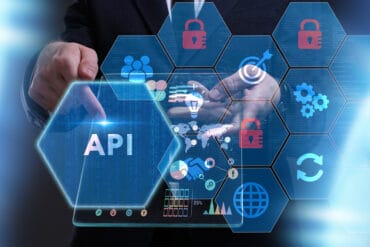
The transformative power of APIs make them as good as currency in the pursuit of data-driven success.
The API market is poised to grow to a $8.2B industry by 2027 – nearly doubling its 2021 size – as more businesses implement digital transformation solutions. APIs serve as the building blocks for today’s modern web applications, quickly connecting discrete services and enabling digital transformation efforts for enterprises and small-to-medium sized businesses (SMBs) alike. They’ve become especially appealing as organizations continue to be in constant search for ways to leverage their data, improve customer experience and expand their offerings.
See also: Are Industry-Specific APIs the New Norm?
APIs grant organizations the flexibility and agility to respond quickly to changing market trends or disruptions. This is critically important for companies looking to remain competitive in global markets, where multiple digital touchpoints are a core customer expectation. This ongoing digital transformation is a key driver of API adoption in the next five years; here are three predictions of what I believe we can expect to see in that time:
Less DevOps, More APIOps. Widespreaddigital transformation has kept developers exceedingly busy in the last two years. This trend is only going to continue as companies further refine their IT strategies to focus on innovation. Between maintaining, testing, and securing new and existing code – and responding to ad hoc requests – developers are stretched thin.
To combat this, we’ll see the rise of APIOps. Adapted from DevOps principles, this model can be applied to API and microservices management and deliver similar results. It requires that all IT stakeholders, from developers to operators, standardize and automate the processes necessary to ensure organization-wide connectivity and integration between all connected apps and services. Done well, this practice can reduce time-to-market and provide more consistency and quality assurance while allowing developers to spend more time adding value to the business through their work.
The rise of the modular business. According to a recent NetSkope report, the average enterprise uses almost 1,200 cloud-based applications to meet business needs. The use of these tools creates numerous data silos, while consumers increasingly expect more integrated user experiences. APIs are the gateway for rich integration and collaboration between these tools and services, ensuring connectivity and collaboration even as processes change.
With this wealth of apps – and the addition of more as businesses grow – the next phase of digital transformation will focus on adopting a modular, or “composable,” architecture for the enterprise. A composable business is one built from interchangeable building blocks which allow them to reorient as necessary in response to internal or external factors. The pandemic exposed how important it is for businesses to be able to pivot in response to a disaster quickly – and that was on top of the increased pace of disruption in general. Agility has now become a core facet of business continuity and adopting a composable architecture, and company culture will be a key aspect of ensuring it. In this increasingly fast-paced landscape, composable architectures have the most potential for scaling and automation, provide robust resource management options, and improve business processes to increase productivity.
Deeper security considerations. The increased demand in the API market increases the potential for more security threats and will drive a stronger emphasis on security in the industry. In fact, Gartner predicts that unsecured and dormant APIs will be 2022’s primary attack vector for cybercriminals. A wider attack base increases the need for tools that can mitigate and protect from API security threats in real time. IT teams will need to create dedicated API security controls to adequately address the security gaps left by existing security protocols.
Proactivity will be key here for any organization as most security breaches go undetected for hundreds of days (IBM reports that the average time to detect and contain a breach is 285 days). Tailoring an organization’s security practice to include API-specific protections will be a big contributor to the industry’s growth in the next five years.
See also: The Embracement of API-centric Models
Businesses should embrace the power of APIs to help them reach their digital transformation and drive organizational innovation. The growth potential of the market shows that many enterprises are eager to embrace true agility and modularity. To do so, companies should prepare themselves by developing strong security practices within their IT teams to mitigate potential threats and maximize potential gains. The transformative power of APIs make them as good as currency in the pursuit of data-driven success.




























